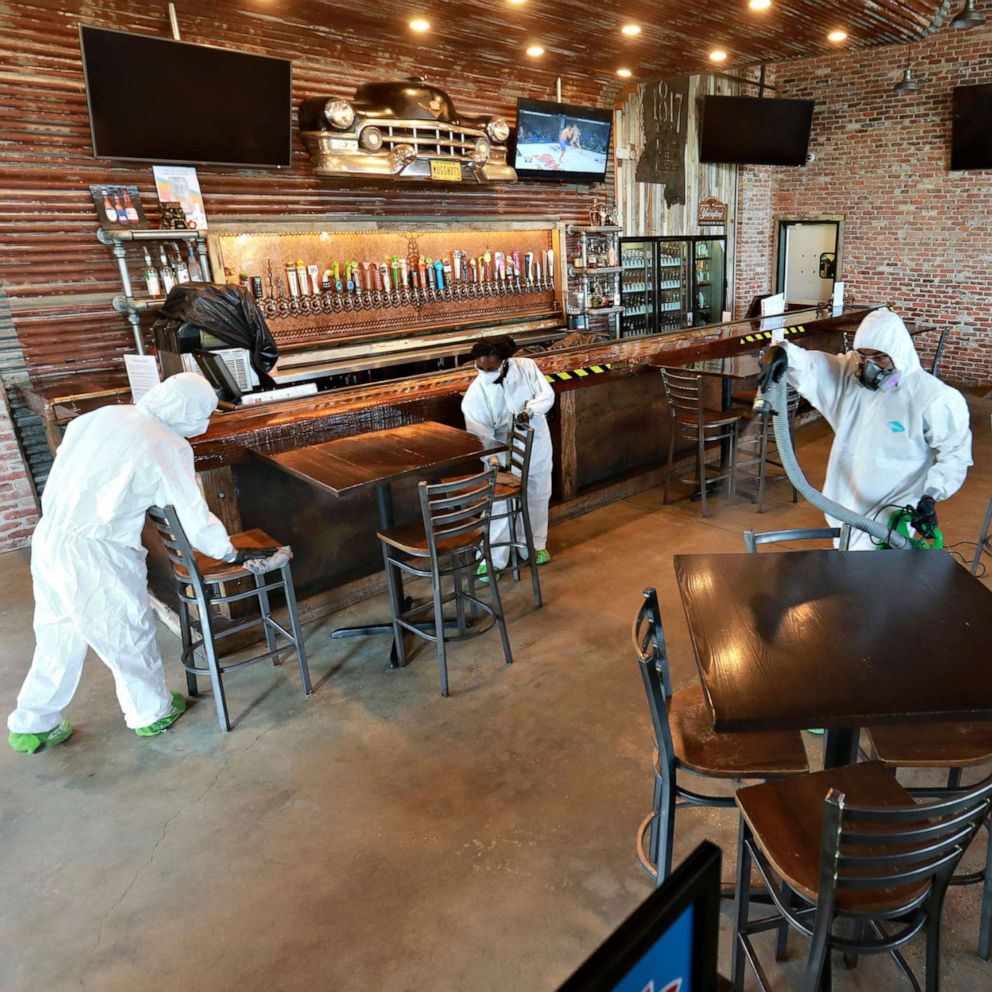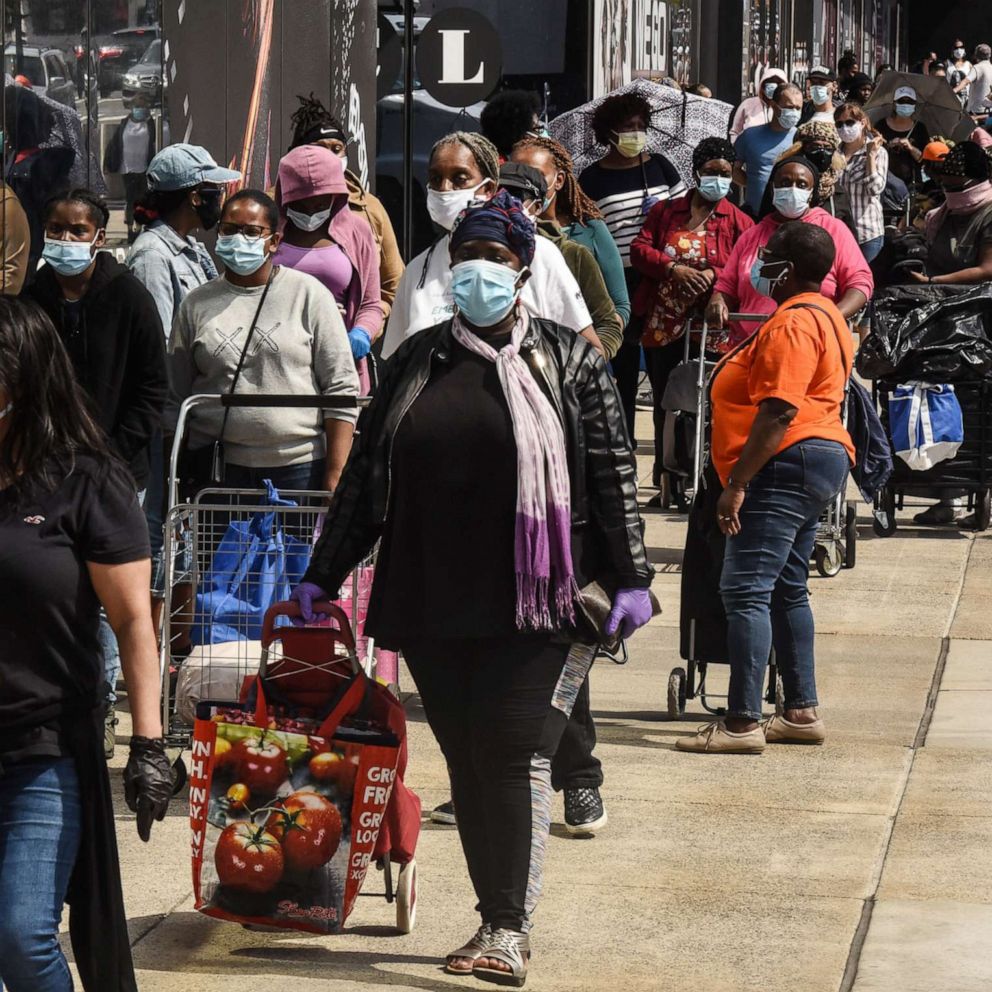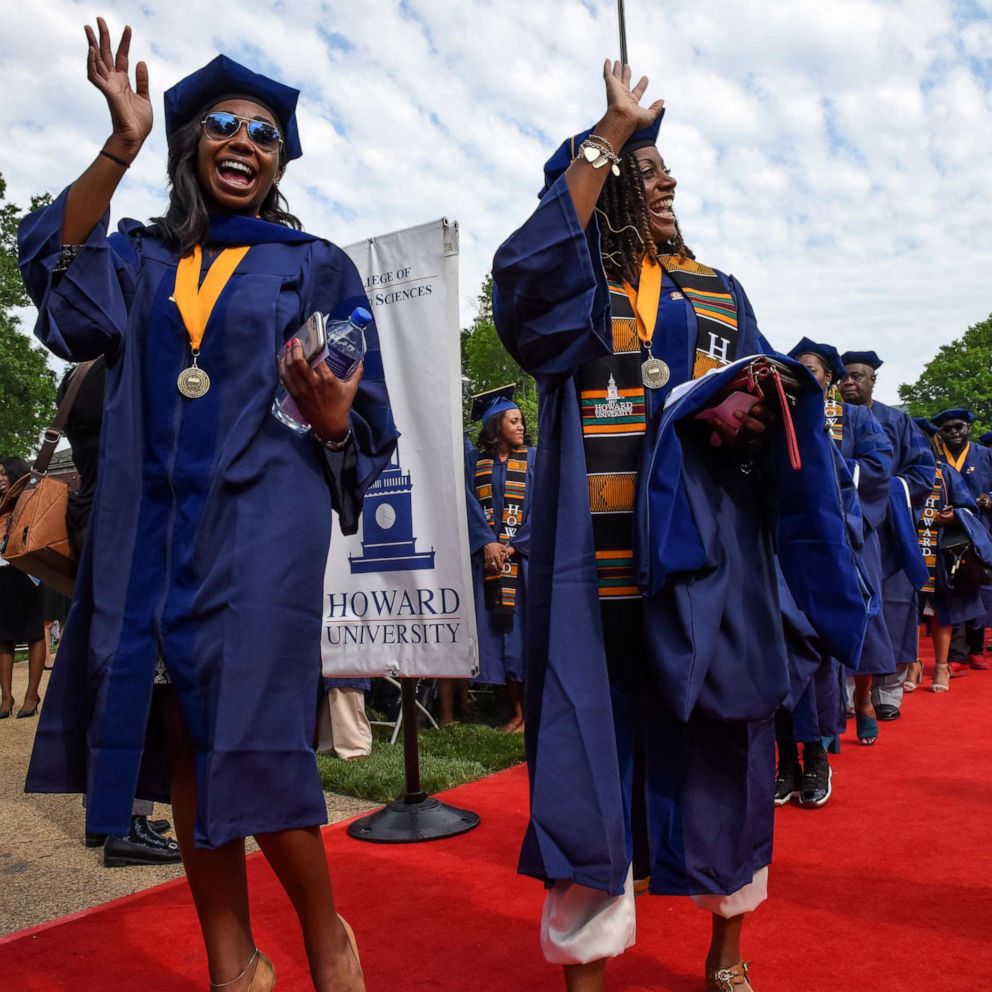200,000 American lives lost from COVID-19: Here's what we've learned
On March 13, President Donald Trump stood in the White House Rose Garden and said "two very big words," as he put it, that would shift Americans' understanding of the novel coronavirus, from a distant problem to a threat that hit closer to home.
"I am officially declaring a national emergency," Trump said that day.
Six months after that declaration, 200,000 Americans would be dead from the virus.
Over the course of that time, scientific understanding of the novel coronavirus and the disease it causes have grown tremendously. But much remains that scientists and doctors don't know about the novel coronavirus and how to treat patients who are infected with it.
Dozens of vaccine candidates are being developed by countries across the globe, but despite worldwide investment, a safe and effective vaccine is unlikely to be approved and distributed until next year, health experts say.
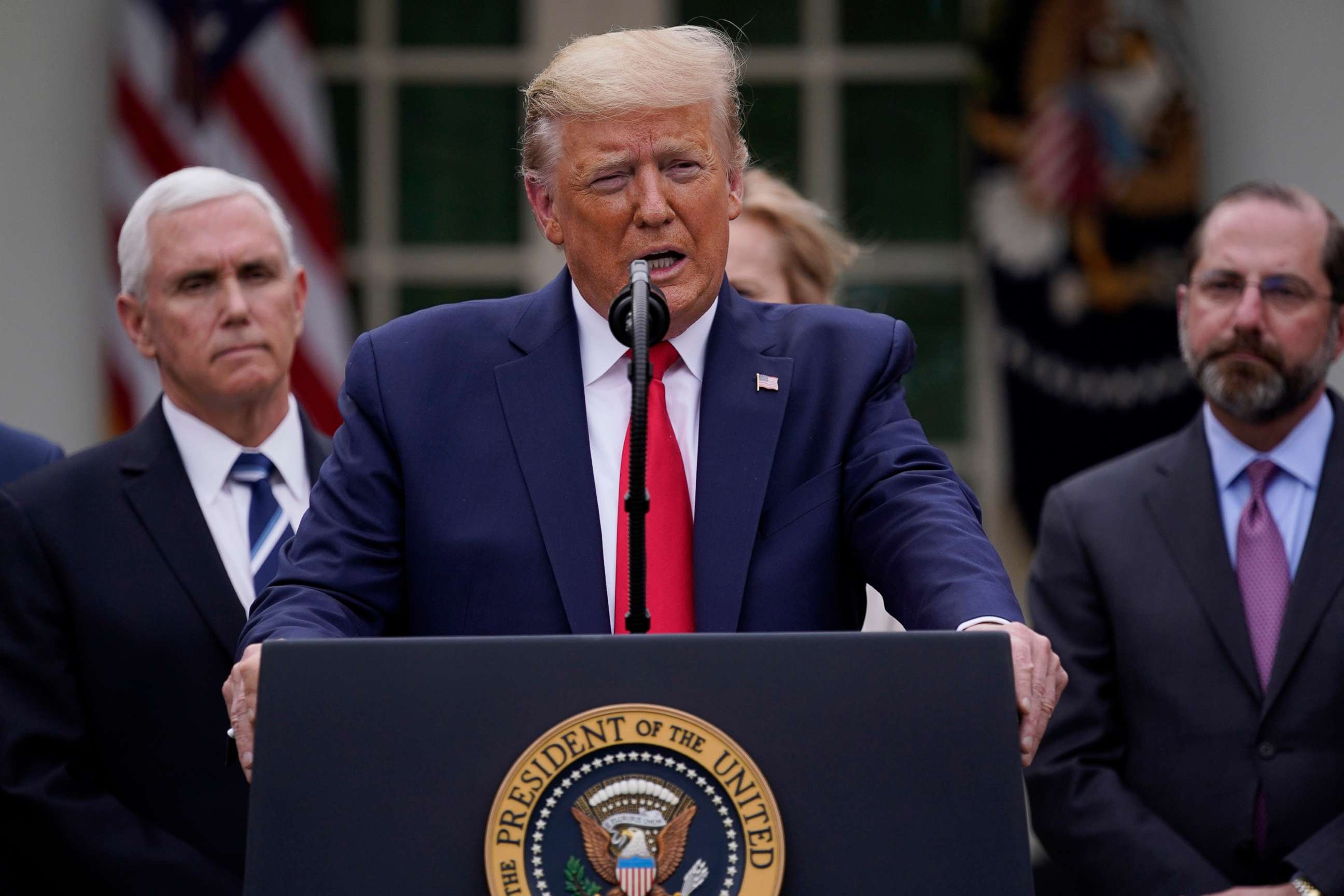
Without a vaccine or reliable treatment to fight COVID-19, the United States has relied on foundational public health measures, like social distancing and face masks, to slow the spread of the virus. But while those efforts have undoubtedly saved lives, they have also strained the economy and tested Americans' willingness to adhere to them over the long haul.
Prolonged isolation, unemployment and hopelessness have also taken a toll on the American psyche. Americans, especially those who are poor and or experienced trauma during the pandemic, increasing reporting feeling depressed, according to survey data.
The pandemic, which has disproportionately sickened and killed front-line workers and people of color, became a political football over the past six months. Masks evolved from a medical product into a symbol of political affiliation. Battle lines were drawn between scientists and conspiracy theorists over how deadly the virus is and an "infodemic" of false information proliferated online.
But surprisingly, given the multitude of grim factors at play, public health experts do not view the U.S. situation as hopeless. There's a way forward, they insist. But it will involve widespread adherence to some of the tough measures that Americans have eschewed in recent months and rooting out politics from the federal government's health agencies.
What we know: The science
Although many unanswered questions remain about the novel coronavirus and COVID-19, scientific understanding of the virus and how it is transmitted have evolved since March.
While COVID-19 was initially thought to primarily attack the respiratory system, we now know that the disease can impact nearly every organ of the body, including the heart, the brain, the vascular system and the nervous system. Kids were once thought to be relatively safe from infection, and while children are less likely to have severe side effects from the disease, outbreaks at schools and sleep-away camps have dispelled the notion that children are immune to the virus. The notion that the virus was an equal opportunity infector was similarly dispelled as front-line workers and people of color were disproportionately sickened and killed by COVID-19.
There's still more to learn about the long-term effects of having contracted the disease. Doctors are unsure what's causing residual symptoms among so-called "long-haulers," or people who have recovered from COVID-19 but feel sick months later. In New York City, the Mount Sinai Health System has opened a Center for Post-COVID Care to try to help long haulers get back to normal.
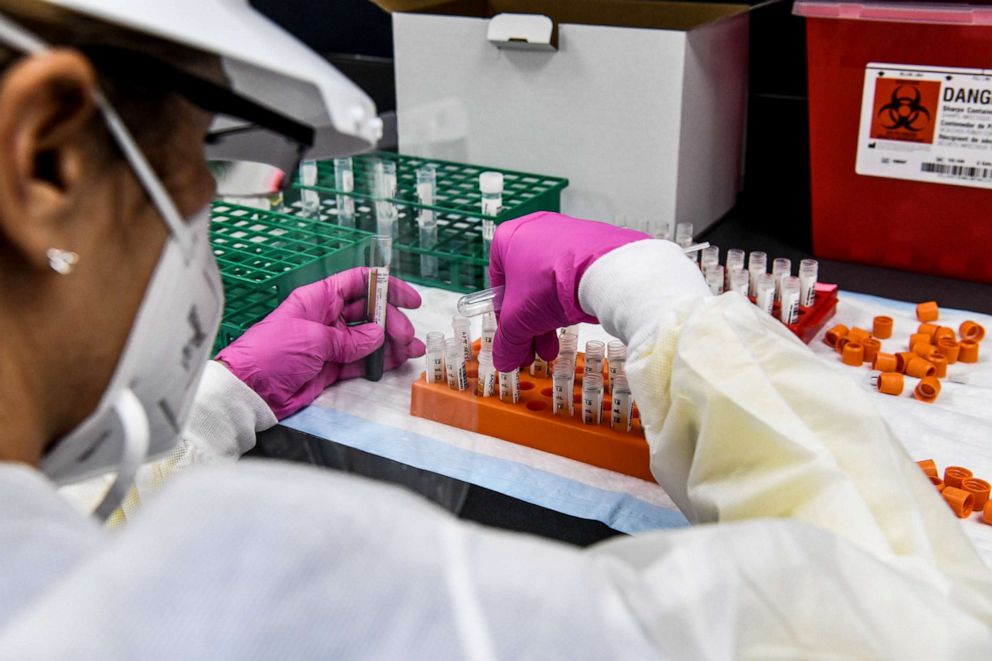
After months of trial and error in cities across the country and widespread outdoor protests, experts agree that the virus is rarely transmitted outside.
However, large gatherings, especially ones without masks or social distancing, remain a concern whether indoors or outdoors. A 300,000-person motorcycle rally in South Dakota and a 62-person wedding in Maine each sparked COVID-19 outbreaks this summer. In both instances, people mixed in mingled in close proximity, many without masks.
In the meantime, the world has pressed forward on developing a vaccine to stem the virus' spread. The United States declined to participate in a global program to distribute a potential vaccine equally, instead choosing to move forward alone. The U.S. government has outlined a playbook for states and local health departments to help distribute a potential vaccine once it is development. No vaccine has finished clinical trials needed for approved use in the general public yet and it's not clear when that approval might come.
While President Trump has suggested that a vaccine could be ready as early as this fall, scientists are skeptical about that timeline. And even after a vaccine is approved it will take "six to nine months” to get the entire American population vaccinated, CDC Director Dr. Robert Redfield told a Senate panel earlier this month.
The psychological fallout: A recipe for deaths of despair
Depression and anxiety following widespread traumatic events, such as natural disasters, terrorist attacks and civil unrest, are well documented in scientific literature. But even the researchers who study trauma were surprised by the pervasive effect COVID-19 seems to be behaving on the American psyche.
The percentage of Americans reporting symptoms of depression has more than tripled since the pandemic began, according to a study data published last month in JAMA Network Open. In surveys conducted prior to the pandemic, 9% of respondents reported depressive symptoms, researchers found. Once the pandemic hit, that percentage jumped to 28% of respondents.
According to Catherine Ettman, lead author of the new study, those depression rates were higher than what researchers observed after Hurricane Katrina, the 9/11 terrorist attacks or the extended civil unrest in Hong Kong. A confluence of factors are likely driving the surge in depressive symptoms, said Ettman, a doctoral student at Brown University's School of Public Health who works at the Boston University School of Public Health.
"This is both COVID and the fear and anxiety around COVID, as well as the dramatic economic consequences," she added.
Indeed, poor Americans with few societal resources are more likely to report symptoms of depression. Compared to 28% of general population, 47% of people with a household income less than $20,000 and 41% of people with household savings under $5,000 reported symptoms of depression. Additional stressors like losing a job, having a friend or family member die of COVID-19 or financial problems were also linked to feeling depressed. Forty-three percent of respondents with high exposure to traumatic stressors during the pandemic reported symptoms of depression, researchers found. Since the United States' COVID-19 outbreak hit different parts of the country at different times, researchers were not able to investigate regional differences in depression.
Suicide rates in the United States were on the rise before COVID-19. Experts worry that the pandemic could drive rates even higher. Sales of firearms, which are the most common suicide method for men and for women, have skyrocketed during the pandemic, with an estimated 2 million excess weapons purchased between March and May than normally would have been bought, according to Federal Bureau of Investigation's background check data.
A second paper published this summer in the American Journal of Epidemiology examined the link between financial strain and suicide. In a commentary of the research, Ettman noted that the pandemic "presents a unique set of risk exposures to populations, which may lead to an increase in suicide."
There are four dimensions of financial strain -- debt, unemployment, past homelessness and lower income -- that are associated with subsequent suicide attempts, Ettman explained. Then she drew a sobering conclusion. "With populations facing record-breaking unemployment, economic recession, and reduced wages, we can anticipate an increase in suicide in the wake of the Covid-19 pandemic," she wrote.
The rundown: Where the U.S. failed
The list of mistakes critics say the U.S. government has made is well-documented, including relying on a slow and patchwork state-led effort instead of a national plan; mixed messaging and politicization of key protective measures like masks; lack of testing and personal protective equipment for front-line workers; and decades-long defunding of America's public health infrastructure.
Many state and local governments have similarly faltered in their coronavirus response, delaying restrictions, pushing reopening despite cases not being on the decline and wavering on requiring masks.
President Trump and the White House have pushed hard for reopening the country in the wake of the virus' spring peak, arguing that the economic damage of the shutdown, including leaving millions unemployed, outweighed other considerations. They have also largely blamed the increase in cases on greater testing, which they touted along with early measures like restricting travel from China.
They also have said that states got the supplies that they needed, including ventilators and personal protective equipment (PPE), although governors have disputed that claim.

Dr. Robert Redfield, the director of the Centers for Disease Control and Prevention (CDC), which has also drawn criticism for being slow to ramp up testing in the early days of the outbreak, admitted that "there's been mistakes," in a previous interview with ABC News.
"Yes, we fail. We're in it doing the best we can," he said. "We're trying to make the best judgments we can."
Federal public health officials and state and local leaders have sent mixed messages on subjects like masking and who can and should get tested. The CDC, for instance, has been recommending mask-wearing since the spring, but initially suggested the general public didn't need to do so.
President Trump, who was hesitant to wear a mask in public even as his public health officials insisted it was life-saving, began wearing one occasionally, although he continues to cast doubt on their efficacy. The administration has not issued a national mask mandate.
During an ABC News Town Hall event Tuesday, Trump said that he wouldn't change anything about his pandemic response. "I think we did a great job," he added.
The escape hatch: Is there a way out?
It won't be easy, but public health experts say there's a way to turn the tide. The way forward for the United States involves "universal adherence" to mask wearing, physical distancing, hand-washing and a moratorium on large gatherings, they say. Testing, tracing and isolating people who are infected with the virus are paramount and need to be prioritized.
"Testing should be rapid, free and widely available," said Cheryl Healton, dean at NYU's School of Global Public Health. Consistent "A person should not die because they reside in a state with a governor who does not believe in science," she added.
Dr. Jennifer Bouey, an epidemiologist and senior policy researcher at RAND, wants to see the United States diversify its intervention efforts beyond vaccine development. "Putting all resources into the first batch of vaccine, while neglecting travel screening and crowd bans will not help reduce the impact of infection in the long run," she cautioned.
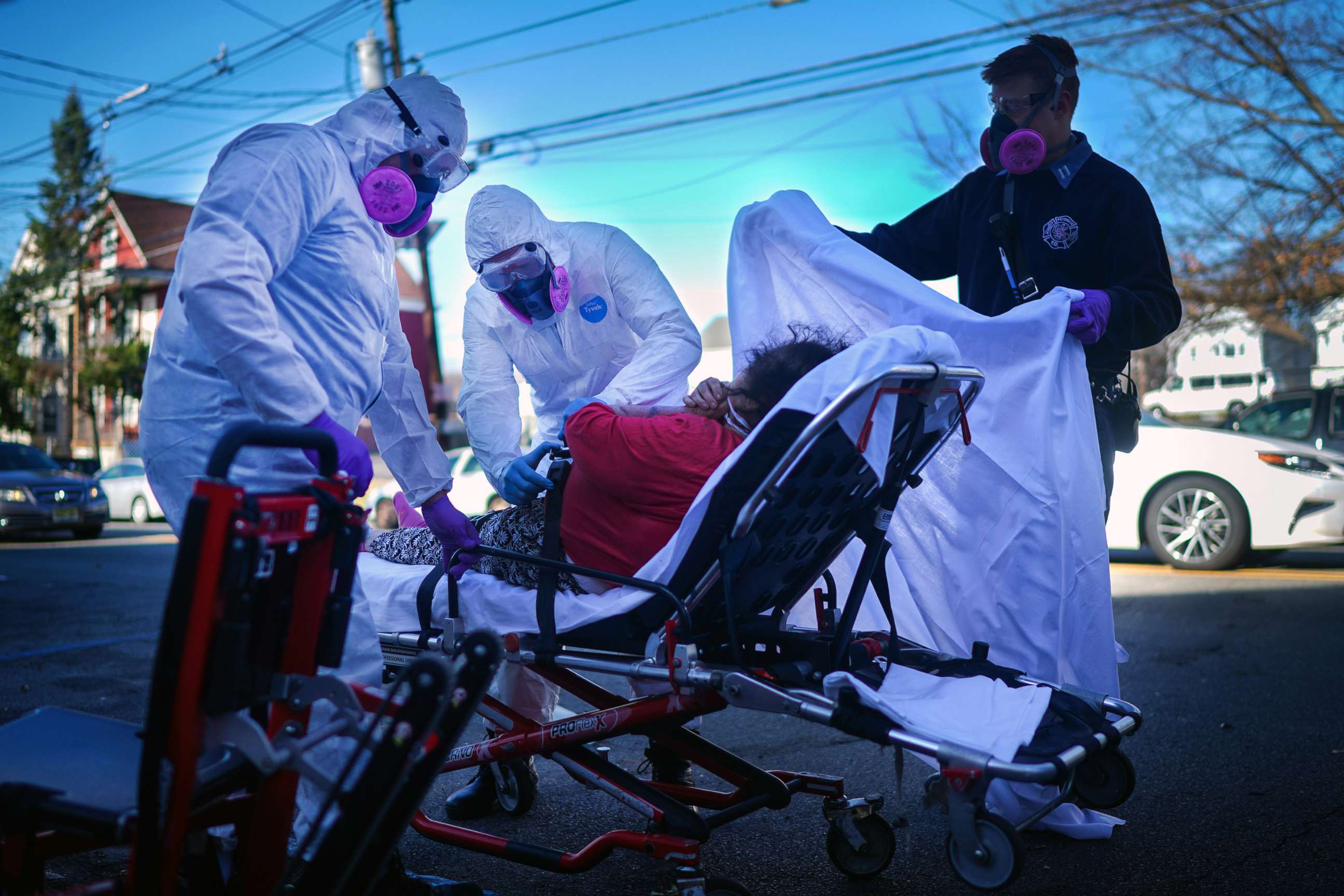
In light of reporting last week by Politico, which found that politically appointed members of the Department Health and Human Services' communications team were allowed to manipulate reports authored by the Centers for Disease Control and Prevention, experts say that it's even more important to free the CDC from White House influence. HHS Assistant Secretary for Public Affairs Michael Caputo has since taken a leave of absence from the HSS.
"It's really undermined the response and standing of this agency," Dr. Amesh Adalja, senior scholar, Johns Hopkins Center for Health Security, said of political influence on the CDC. Scientists regard the CDC's process and weekly reports as "sacrosanct, almost scripture," Adalja explained. "It underscores the fact that this is not the normal way we deal with the CDC," he added. "If we are to get control of the outbreak, we have to restore full power and authority to the CDC."
Healton similarly lamented the politicization of the CDC. "The CDC was a trusted brand, it is less so now, tragically," she said.
What to know about the coronavirus:
- How it started and how to protect yourself: Coronavirus explained
- What to do if you have symptoms: Coronavirus symptoms
- Tracking the spread in the U.S. and worldwide: Coronavirus map
Tune into ABC at 1 p.m. ET and ABC News Live at 4 p.m. ET every weekday for special coverage of the novel coronavirus with the full ABC News team, including the latest news, context and analysis.

